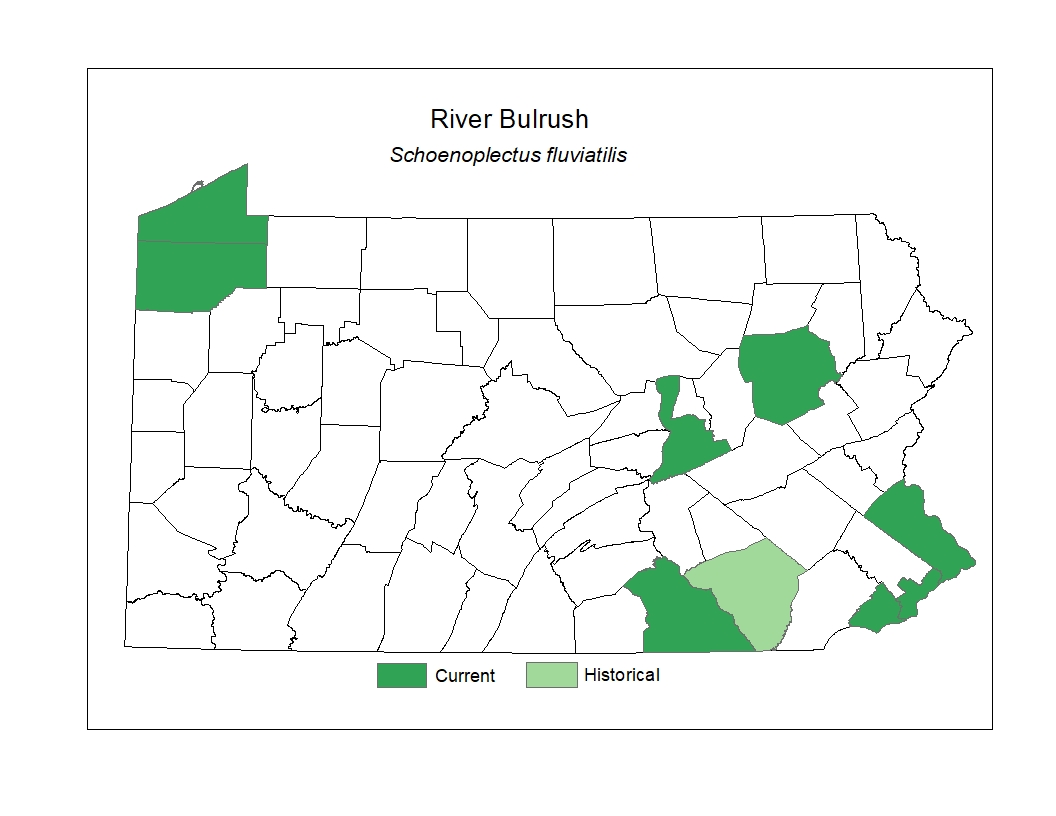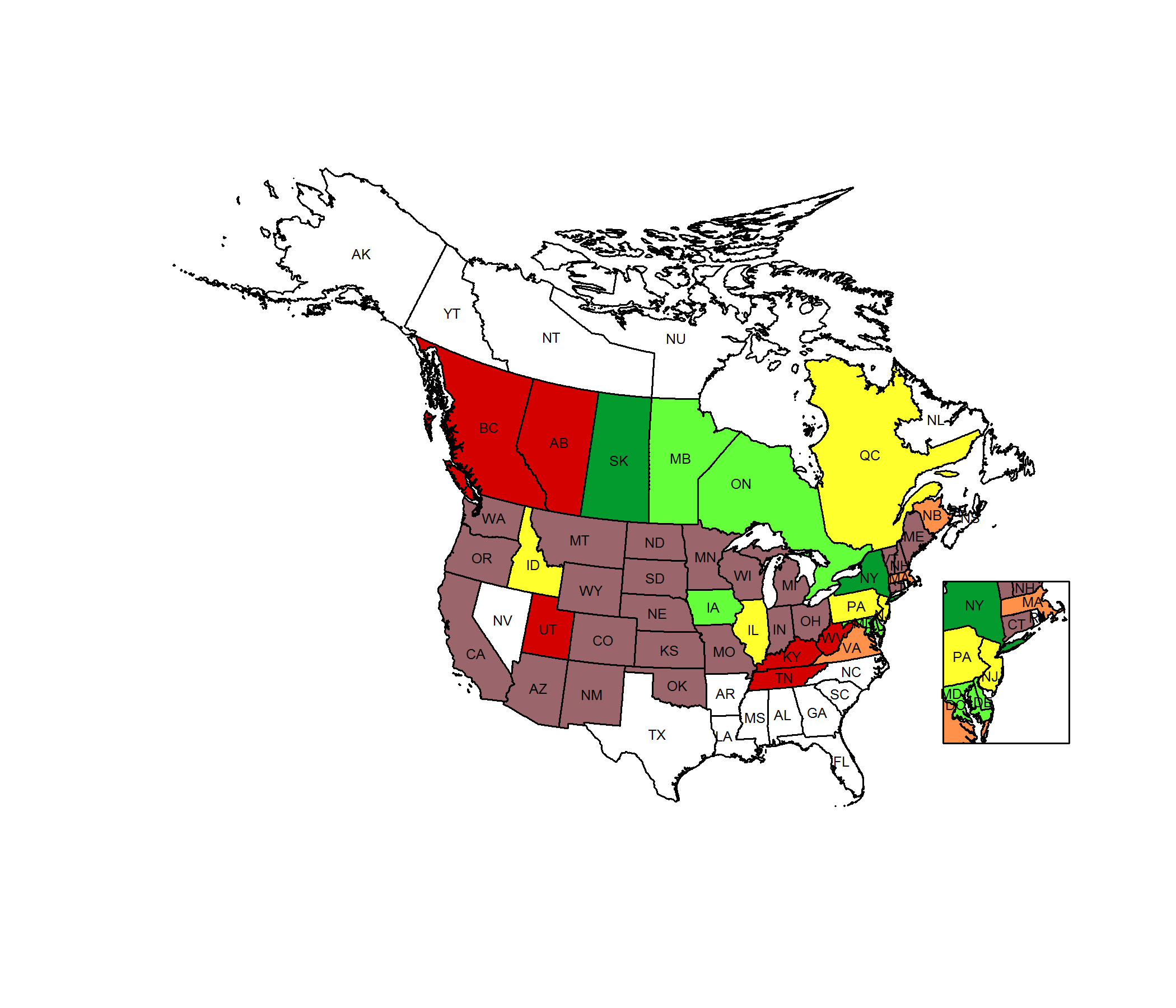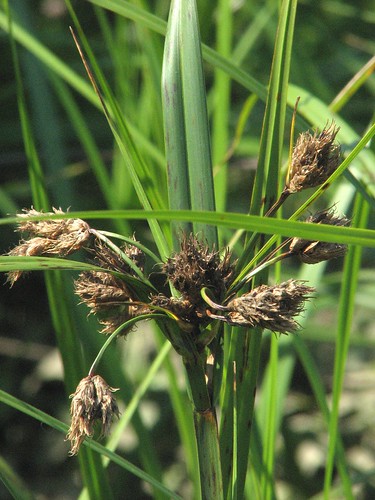 Species Factsheets
Species Factsheets
Schoenoplectus fluviatilis
River Bulrush
State Status: Pennsylvania Rare (PR)
PBS Status: Pennsylvania Rare (PR)
Federal Status:
Global Rank: G5
![]() rank interpretation
rank interpretation
State Rank: S3
Did You Know?
The plant was ranked 11th out of 250 on a list of potential antifertility plants in China.
Description
River bulrush (Schoenoplectus fluviatilis) is a perennial herb that forms colonies from underground stems. The triangular aerial stems are robust and may grow from less than 1-2m in height. The leaves are alternately arranged, grass-like, elongate, averaging about one centimeter wide, and somewhat V-shaped in crosssection. The flowers, appearing from June to August, are grouped in 1.5-4cm spikelets. The spikelets are grouped in a branching cluster at the top of the stem that is subtended by several spreading, leaf-like bracts. The individual fruits are about 3.5-5mm long.
Rank Justification
Vulnerable in the nation or state due to a restricted range, relatively few populations (often 80 or fewer), recent and widespread declines, or other factors making it vulnerable to extirpation.
PABS
The PA Biological Survey (PABS) considers river bulrush to be a species of special concern, based on the relatively few occurrences that have been recently confirmed and its wetland habitat. It has a PA legal rarity status and a PABS suggested rarity status of Rare. About thirty populations are currently known from the state.
Habitat
It grows on the shorelines of rivers and streams, and also in marshes and other wet places.
Survey Dates
Fruits June - August
Distribution
In Pennsylvania, it has been documented
historically in the northwestern and southeastern counties.

Threats
Invasive species represent a threat to the habitat of river bulrush.
Management
The viability of the riverine populations of river bulrush may be enhanced by maintaining the water quality and natural hydrology of the streams, with their seasonal fluctuations and scouring, as well as retaining natural conditions along the shoreline areas. For non-riverine populations, establishing buffers and protecting the hydrology around wetlands are necessary.
Conservation Status Map


NatureServe. 2017. NatureServe Explorer: An online encyclopedia of life [web application]. Version 7.1. NatureServe, Arlington, Virginia. Available https://explorer.natureserve.org.
https://practicalplants.org/wiki/Scirpus_fluviatilis
- NatureServe. 2018. NatureServe Explorer: An online encyclopedia of life [web application]. Version 7.1. NatureServe, Arlington, Virginia. Available at https://www.natureserve.org/explorer
- Pennsylvania Natural Heritage Program. 2018.
- Rhoads, A.F. and W.M. Klein, Jr. 1993. The Vascular Flora of Pennsylvania. American Philosophical Society, Philadelphia, Pennsylvania. Rhoads, A.F. and T.A. Block.
- 2007. The Plants of Pennsylvania: An Illustrated Manual. 2nd edition. University of Pennsylvania Press, Philadelphia, Pennsylvania.







